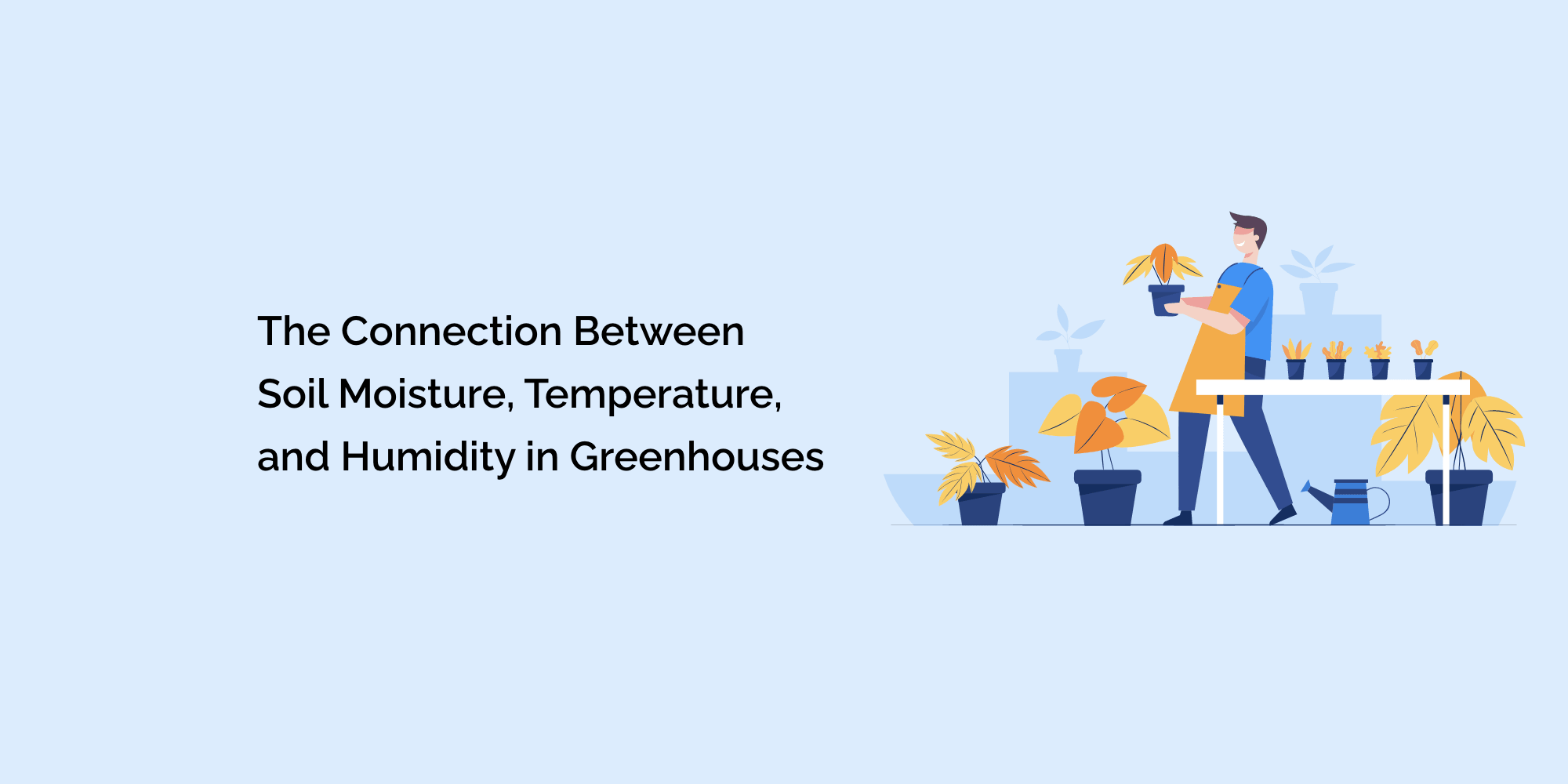Greenhouses, with their controlled environments, are a testament to the intricate dance between various factors that influence plant growth.
Among these, soil moisture, temperature, and humidity stand out as pivotal. But how are they interconnected?
In this blog, we'll delve deep into the relationship between these three elements and their collective impact on greenhouse cultivation.
1. The Fundamental Trio: Soil Moisture, Temperature, and Humidity
Each of these factors plays a distinct role in plant health:
- Soil Moisture: Dictates how much water is available for plant roots.
- Temperature: Influences plant metabolic rates and growth cycles.
- Humidity: Affects plant transpiration and overall moisture balance.
2. Soil Moisture and Its Influence
a. Evaporation and Humidity:
- Water from the soil evaporates into the air, increasing the greenhouse's humidity. The rate of this evaporation is influenced by both soil moisture levels and temperature.
b. Plant Uptake and Transpiration:
- Plants absorb water from the soil and release it into the air through transpiration. This process is affected by soil moisture and ambient humidity.
3. Temperature's Dual Role
a. Direct Impact on Plants:
- Temperature directly affects plant processes like photosynthesis and respiration. It also influences soil moisture evaporation rates.
b. Regulating Humidity:
- Warm air can hold more moisture than cold air. As temperature rises, the air's capacity to hold moisture increases, which can impact relative humidity levels.
4. Humidity: The Balancing Act
a. From Soil to Air:
- High soil moisture levels can lead to increased humidity in the greenhouse, especially if temperatures are also high.
b. Plant Health and Disease:
- High humidity levels, especially combined with warm temperatures, can promote mold and fungal growth. Conversely, low humidity can stress plants, causing them to lose more water.
5. The Interplay in Action
Imagine a scenario where the greenhouse soil is excessively watered, and the outside temperature rises. The soil's moisture will begin to evaporate rapidly, increasing the internal humidity.
If the greenhouse isn't adequately ventilated, this high humidity, combined with high temperatures, can create an environment ripe for fungal diseases.
6. Managing the Trio for Optimal Growth
a. Regular Monitoring:
- Use soil moisture sensors, thermometers, and hygrometers to keep a close eye on these parameters.
b. Automated Systems:
- Modern greenhouses can benefit from systems that automatically adjust watering schedules, ventilation, or even shading based on real-time data.
c. Manual Checks:
- While technology is a boon, regular manual inspections can help spot issues before they escalate.
7. The Bigger Picture: Beyond the Greenhouse
Understanding the relationship between soil moisture, temperature, and humidity isn't just crucial for greenhouses. It's a reflection of the broader interplay of elements in nature.
By understanding and respecting this balance, we can cultivate not just healthier plants but also a deeper appreciation for the natural world.
Conclusion
The dance between soil moisture, temperature, and humidity in a greenhouse is a delicate one. Each factor influences the others, creating a dynamic environment that's constantly in flux.
For the keen gardener, understanding this relationship is the key to unlocking the full potential of their greenhouse, ensuring that plants thrive in harmony with their surroundings.








